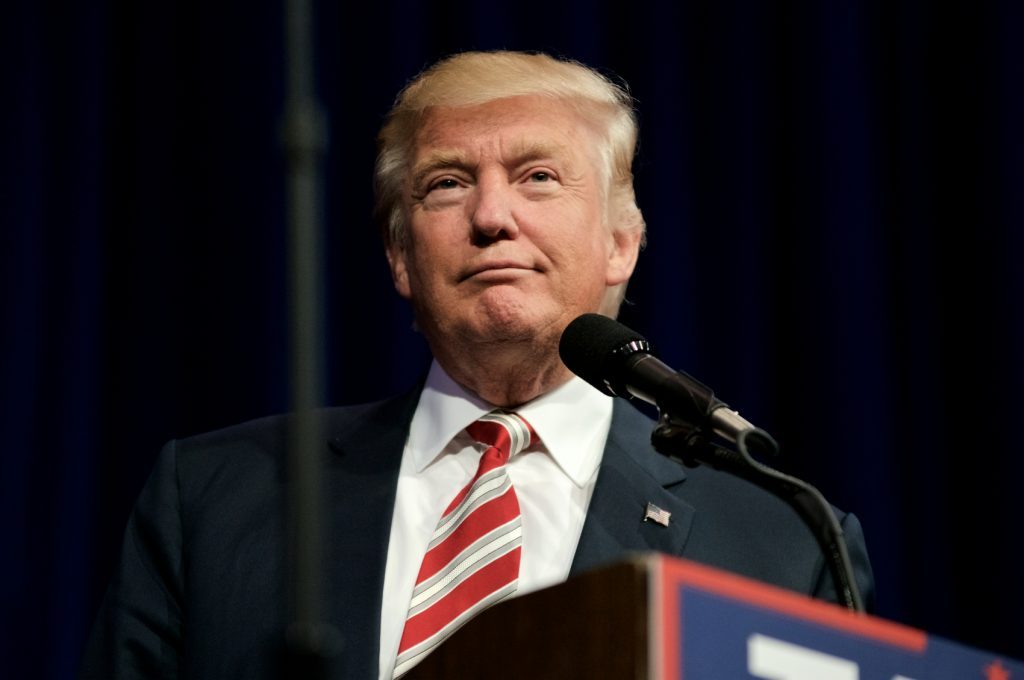2016 Review: There’s New Momentum For Bitcoin and the Blockchain Industry
https://markethive.com/chriscorey/page/mycrypto
2016 set the bull charging again. A combination of events, beginning with bitcoin’s popularity as a hedge that protects assets from the forces afflicting traditional markets, set the stage for the price more than doubling in 2016. The good news on the price front tempered the volatility that has historically plagued the cryptocurrency, helping to solidify its role in society.
The positive news on the price front facilitated the continuing venture capital investment in bitcoin that was evident throughout the year. Venture capital investment in bitcoin in the last three years topped $927 million.
Bitcoin was also the best-performing currency this year, climbing 21% in USD value. Its performance surpassed that of the U.S. dollar and the Israeli shekel.
Moving Mainstream
The currency has moved from an investment commodity to everyday use, according to Coupofy.com, a digital marketing concern that provides online coupons for retailers.
Overstock, the online retailer that has been one of bitcoin’s most visible supporters among U.S. businesses, in December became the first publicly-traded company to issue stock over the Internet, distributing more than 126,000 company shares using the bitcoin blockchain.
Through a subsidiary called tØ, Overstock created a blockchain-based technology to facilitate trading financial securities.
Bitcoin also moved deeper into the financial mainstream in 2016. In May, derivatives giant CME Group launched two bitcoin benchmark indexes. Intercontinental Exchange Inc., a CME Group rival which owns the New York Stock Exchange, also announced plans to launch a real-time price index for the bitcoin.
Price Surge Began Early
Bitcoin’s price rose to just below $500 after the U.S. Federal Reserve Bank raised its fund rate by 25 basis points in late 2015. The bitcoin price tracked the U.S. dollar rally against other fiat currencies.
The negative start of the 2016 stock market demonstrated bitcoin’s value as a hedge against more volatile investment options. Bitcoin was one of the few winning investments in the worst first week of the year for U.S. stocks in early January. The Dow Jones Industrial Average and the S&P 500 had their worst first weeks in history. Bitcoin, gold, the yen and natural gas were in growth modes.
Bitcoin’s price in January surged more than $20 in a 10-hour period to scale beyond $450. The climb did not occur in a straight line, however.
After falling to $360 in January, the price rebounded past $400 in February.
Fed Rate Hike Doesn’t Spook Bitcoin
The Federal Reserve Bank’s 2016 rate increase announcement in March had little impact on bitcoin. Half the market passively accumulated via limit orders placed just below price while the other half actively sold at market price.
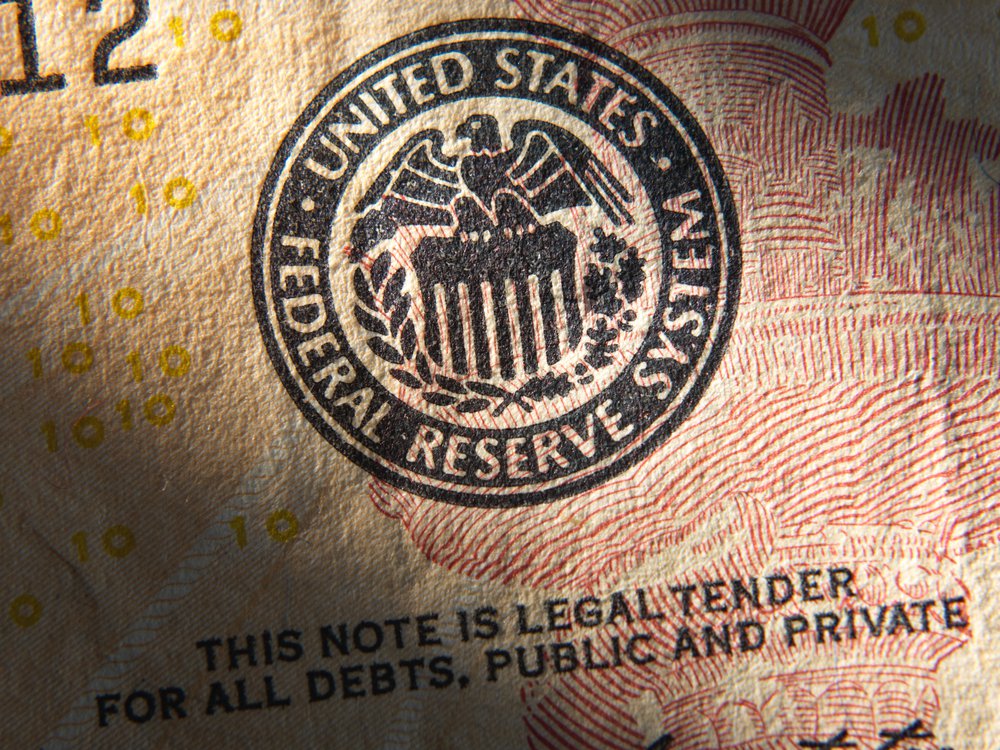
The Federal Reserve’s early rate hike did not have a telling impact on bitcoin price.
The release of the code for Segregated Witness (SegWit) in April, an upgrade to the bitcoin protocol designed to enable more transactions within a single block of the blockchain, helped push bitcoin past $460.
In June, the price soared beyond $570, reaching a near two-year high. It hit $750 by mid-November.
Geopolitical Events Support Bitcoin
Global political events worked in bitcoin’s favor, beginning with the June U.K. Brexit referendum. After the U.K. pound (GBP/USD) dropped to $1.32, the U.S. dollar and gold rallied while bitcoin achieved a $140 gain.

Bitcoin prices were impacted by Britain’s referendum to exit the European Union.
The climb was not uniform.
Bitcoin’s price crashed in August as the Bitfinex exchange suffered a security breach that led to the theft of an unconfirmed number of bitcoins. The big exchange further announced a shutting down of its website and trading in ominous signs reminiscent of Mt. Gox.
Bitfinex got back online after advising users that they would lose 36% of their assets. The exchange levied a 36% price on all of its users, whether or not they were victimized individually by the hackers. The attack led some to believe the industry had not come up with a way to ensure security.
Others viewed the Bitfinex episode as proof that the bitcoin network is capable of withstanding negative events.
The Surge Continues
The price struck a new yearly high of $794.39 on the Bitstamp Price Index (BPI) in late December as the surge continued.
Financial adviser Martin Tillier observed that bitcoin’s previous price hikes were mysterious, but the current one is due to the devaluation of China’s currency.
Because there are logical reasons for the current price surge, the market is acting as a forward discounting mechanism and some degree of appreciation is now built into the price, Tillier noted. In addition, the interest from traders combined with the ability to short the currency allows the market to check upward spikes naturally, simply by attracting sellers.
Bitcoin gained more value than all other currencies in 2016, driven by China’s crackdown on the yuan, isolationist rumblings in the U.S. and the U.K, and increasing acceptance by consumers and businesses, according to Bloomberg.
By the time the price surged 79 percent since the start of 2016 to $778, it reached its highest level since early 2014, according to data compiled by Bloomberg. At that point, bitcoin quadrupled the gains posted by Russia’s ruble and Brazil’s real, the world’s top two hard currencies.
Hard Fork Debate Continues
Drama engulfed the bitcoin industry over the hard fork solution to address the bitcoin block size. The issue caused longtime developer Mike Hearn to announce his departure from bitcoin in December of 2015.
Bitcoin Classic — a successor to Bitcoin-XT — appeared on the scene as a possible new implementation of the bitcoin protocol.
Many in the industry celebrated the new solution, despite the reality that the coding was not complete, and that the main developer on the project once noted that he was an average C++ programmer. This didn’t stop industry leaders like Coinbase CEO Brian Armstrong from championing the technology.

The scaling debate is set to continue in 2017.
The main controversy around Bitcoin Classic centered around two opposing viewpoints. Those seeking to increase the maximum block size from 1 MB to 2 MB claimed that it is necessary to keep transaction costs down and continue the growth of the system.
Those against the block size increase argued that important technical issues were not properly addressed.
The core development team decided to take a clear direction, yet some miners, exchanges and start-ups pushed back.
The Classic camp, consisting of entrepreneurs, wanted a more immediate fix to expanding the network by increasing the block size. The Core camp, consisting of miners, didn’t want to increase the block size since some miners will be less likely to earn mining rewards.
Mining pools representing at least 70% of the total hashing power of the bitcoin network and some of the largest bitcoin exchanges said they would not support Bitcoin Classic or any “contentious hard-fork.”
Bitcoin Price Holds
When the bitcoin reward halving occurred in July, there were no price drops. Parties were held worldwide.
There was concern about miner profitability since miner rewards were cut in half from 25 to 12.5 bitcoins.
The bitcoin price eventually resumed its upward trend. One factor noted at the time was the devaluation of the Chinese yuan, driving Chinese investors to bitcoin.
In January 2017, the foreign currency cap for the amount of foreign currency that a Chinese citizen can convert ($50,000) will be reset for the new year. Inevitably, the surge in capital outflows could weaken the yuan further, setting off a market reaction that could lead to further demand for safe assets such as bitcoin.
Other factors cited were India’s demonetization drive, the unexpected Trump U.S. Presidential election victory and the U.K. Brexit referendum.
Blockchain Continues Its Surge
Investment in blockchain technology reached new highs in 2016.
Digital Asset Holdings, the New York firm developing blockchain solutions for the financial services industry, announced two new investors. IBM and Goldman Sachs joined 13 other investors with the funding scaling beyond $60 million.
Blockstream, a startup developing blockchain sidechains, raised $55 million in Series A funding, bringing the total capital raised to $76 million.
The R3 blockchain consortium which is testing blockchain technology for securities settlements and payments continued to make news. In late 2015, 12 banks joined the group. The consortium also opened membership to non-bank financial companies, including clearing houses, exchanges, standards organizations and infrastructure providers.
In November of 2016, some banks, including Goldman Sachs, one of the earliest members of the R3 blockchain consortium, reportedly chose not to renew membership with the working group.
VISA and blockchain technology partner BTL announced in September plans to invite a select group of European banks to participate in a blockchain project that will see inter-bank payments made via transfers over the distributed ledger.
Microsoft and Bank of America Merill Lynch in September announced a collaboration with the aim to “fuel transformation of trade finance transacting” with blockchain technology. The biggest changes would mean reduced transaction settlement time and newly automated processes.
R3 and 12 member banks in October trialed Ripple’s native digital currency token XRP, using the fintech startup’s blockchain technology, for cross-border payments. The trials were conducted at R3’s lab in an effort to demonstrate cost-cutting and increased efficiency of cross-border payments using Ripple’s digital asset.
Microsoft’s blockchain-as-a-service (Baas) endeavor gained new partners, including BitPay, for the service that will be made available for its Azure cloud platform.
Bitcoin entrepreneur Jeff Garzik started Bloq, a code-for-hire service to develop features for blockchain software and provide access to blockchain support. The company charges $3,000 to $5,000 per month. PriceWaterhouseCoopers agreed to sell the service to its customers.
New Blockchain Applications Emerge
Blockchain technology continued to find new applications in 2016.
Early in the year, General Motors tweeted news of its collaboration with Lyft to create self-driving vehicles. The announcement came as the industry was awaiting Ford and Google to announce a partnership for self-driving vehicles. Both of projects promise ripe grounds for smart contracts, blockchain-powered contracts that can tie IoT and vehicle finance together.
Blockchain is allowing musicians to monetize their work and engage with fans more directly. By embedding music in the blockchain, those involved in its creation can get paid immediately in cryptocurrency. Hence, the blockchain has the potential to change the way the music industry operates.
Several initiatives were announced to use blockchain technology to connect energy grids, delivering more efficient and environmentally sustainable energy. One company, L03 Energy, is building an “open source cryptographically secure” blockchain to manage transactions across a microgrid.

The hype surrounding blockchain technology has led to numerous pilots and prototypes deployed in 2016.
PriceWaterhouseCoopers, a provider of audit and assurance, tax and consulting services, teamed with Z/Yen, a London-based commercial think tank that promotes societal advancement through better finance and technology, to study the potential of blockchain technology in wholesale insurance.
Walmart and IBM partnered in October to manage the supply chain for Chinese pork on a blockchain, ensuring consumer confidence in the food industry. Teaming up with Tsinghua University in Beijing, it is hoped that by digitally tracking the movement of pork in China on a distributed ledger, food disasters will be prevented.
The issue of institutions hyping blockchain technology without bitcoin continued to be an area of debate in 2016. While many financial institutions expressed interest in blockchain technology but not bitcoin, some observers pointed out that the institutions ignore the fact that a cryptocurrency is needed to support a blockchain. One observer claimed that hyping the blockchain while denigrating bitcoin is an effort to blunt bitcoin’s challenge to traditional currency.
Ethereum Makes Waves
2016 was also a big year for Ethereum, which continues to make waves on the cryptocurrency landscape, with developers introducing new applications that take advantage of its smart contract and crowdsale capabilities. The market cap for ether, the crypto asset and token of the Ethereum network, soared above $1 billion.
As Ethereum grows, it earns media coverage which in turn fuels its growth. It attracted interest from major financial companies that are using it for private blockchains and smart contracts.

The Ethereum ecosystem continues to grow.
In May, the Gemini exchange, founded and operated by Tyler and Cameron Winklevoss, gained the approval from the State of New York via the Department of Financial Services to offer ether trading.
Ethereum witnessed some growing pains in 2016. In June, the distributed autonomous organization (DAO) was breached when an attacker drained the ether contained in the DAO into a child DAO.
In response, Ethereum developers proposed a soft fork to be followed by a hard-fork. Miners unanimously supported the fork. The discussion and debate around the DAO vulnerability raised questions about trust and the human factor in the realm of distributed ledger technology.
Ethereum’s price jumped when the fork took effect in July. The clean resolution to the attempted heist was possible due to a new, decentralized governance model where those with a stake in the system cast their decisive votes.
Regulatory Activity Increases
While regulatory actions are not generally viewed as positive for any industry, regulations in 2016 were supportive in some ways.
A European Court of Justice ruling exempted bitcoin from value added tax (VAT), which was hailed as a victory by bitcoin advocates. The case was between the Swedish Tax Authority and the nation’s Revenue Law Commission. It commenced after a Swedish citizen asked for clarification of VAT on bitcoin.
Regulatory actions in Russia, a country that has not been supportive of bitcoin, improved in 2016. The Internet Development Institute (IRI) of Russia prepared a roadmap titled “Economics and Finance” which included a proposal for regulating blockchain.
Deputy Finance Minister of the Russian Federation stated in October that the spread of bitcoin in Russia does not represent a threat to the country’s financial ecosystem at its current rate of adoption. As such, the plan to ban the cryptocurrency was put on hold. The Ministry of Finance initially proposed a 4-year prison sentence for bitcoin users late last year. In what could be seen as a move to bring respite, the Ministry then proposed a 2-year “corrective labor” sentence — a combination of penal detention and forced labor — for bitcoin adopters earlier this year.
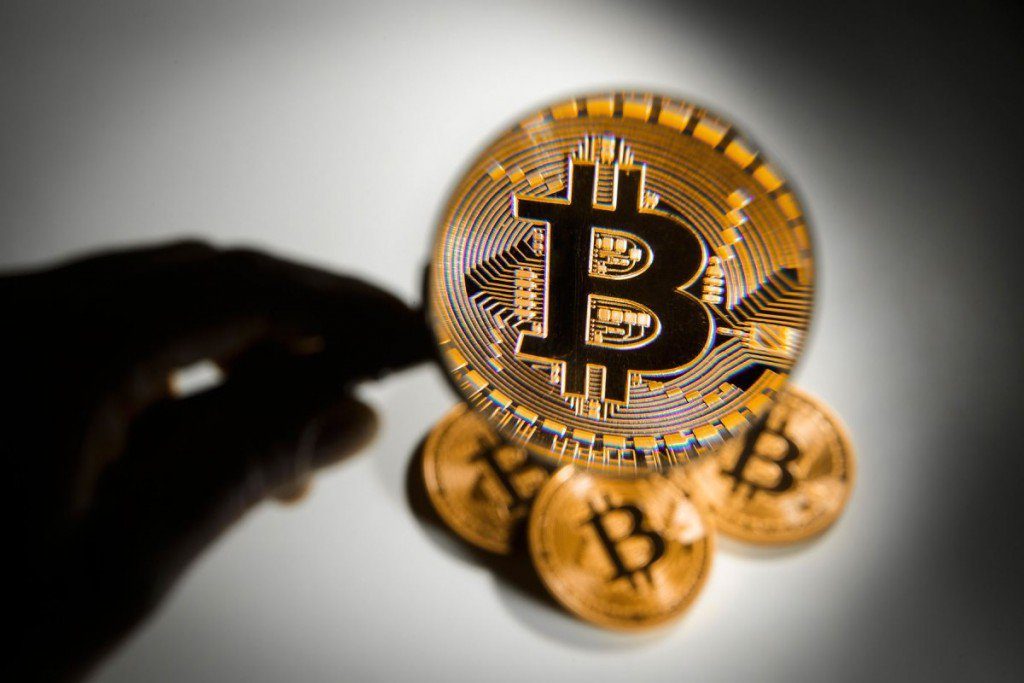
Bitcoin’s increasing adoption and prominence has led to regulatory moves by several countries in 2016.
A document by the federal tax authority in Russia in December revealed its first official stance on the legal status of cryptocurrencies. It noted bitcoin cannot be blocked or banned since cryptocurrencies can be deemed foreign currency transactions according to Russian laws.
State regulatory initiatives in the U.S. increased in 2016, indicating growing awareness of bitcoin.
Lawmakers in the State of Wyoming proposed a bill to require that cryptocurrency be treated the same as fiat currency under the state’s money transmitter’s act. The purpose of the bill is to encourage bitcoin-friendly companies to want to do business in the state.
The New York State Department of Financial Services in June approved Ripple Labs’ BitLicense application to sell and obtain XRP — the native digital asset of the Ripple Consensus Ledger, a platform used by financial institutions and companies.
North Carolina Gov. Pat McCrory signed a law that defines “virtual currency” and clarifies what activity triggers licensure. The law defined the term “virtual currency” and the activities that trigger licensure. Virtual currency miners and blockchain software providers will not require a license for multi-signature software, smart contract platforms, smart property, colored coins, and non-hosted, non-custodial wallets.
The State of Illinois sought comment on a guidance document it released on whether a money transmitter license is needed to engage in selling decentralized digital currencies. The document says the department does not require such a license since virtual currencies have not been adopted by governments as currency.
The document outlined the Department of Financial and Professional Regulation (IDFPR) interpretation of the state’s Transmitters of Money Act and seeks to establish the regulatory treatment of decentralized digital currencies.
IRS Summons Coinbase
One of the more alarming regulatory developments in the U.S. occurred in mid-November, when the IRS summoned Coinbase to provide information about its customers to facilitate the federal agency’s investigation into possible tax evasion by users of virtual currencies at any time between Jan. 1, 2013, through Dec. 31, 2015.
A federal judge approved the IRS summons, which Coinbase said it would oppose.
Mergers And Acquisitions Continue
Mergers and acquisitions continued in 2016.
Early in the year, Barry Silbert’s Digital Currency Group, an initial investor in Coindesk, acquired the publication as a whole, with editorial and business teams at CoinDesk to merge with Digital Currency Group’s events platform to form a new subsidiary based in New York.
In January, the largest ever deal of its kind in the bitcoin industry saw leading European bitcoin exchange Krakenacquire bitcoin exchanges Coinsetter and CaVirtEx.
There were also industry casualties.
KnCMiner, after winning a lawsuit against complainants who had sued over late or failed delivery of one of the company’s previous iterations of bitcoin mining hardware, filed for bankruptcy ahead of July’s mining reward halving.
The Swedish company’s CEO Sam Cole cited energy taxes and uncertainty about the future of the bitcoin mining market.
BitLendingClub in December decided to close its service designed to help small businesses in emerging markets due to regulatory pressures, the company informed customers in a blog on its website. The blog noted the company worked hard to build a platform to provide the greatly needed service.
The blog did not expand on what regulatory pressures it was facing.
Controversies Aplenty
The Silk Road saga continued to haunt bitcoin in 2016. Ross Ulbricht’s defense filed an appeal. The defense will argue that the court prevented crucial evidence from seeing the day of light.
A federal court sentenced a Utah man, Curtis Clark Green, whose faked murder helped law enforcement put an end to the Silk Road Marketplace.
In May, Norway police made their largest drug bust ever when they arrested 15 people selling drugs on what they claim is the second version of the Silk Road marketplace that the U.S. FBI closed in 2013.
Other controversies emerged. The Securities and Exchange Commission (SEC) sought judgments against Homero Joshua Garza, GAW Miners and ZenMiner, LLC, claiming they engaged in selling fraudulent investments in virtual currency mining operations.
The SEC ordered the defendants to pay $10,384,099 in disgorgement plus prejudgment interest, along with civil penalties. The SEC charged Garza, GAW Miners and ZenMiner with securities fraud and conducting a Ponzi scheme in January. The motion seeks permanent injunctions prohibiting the companies from engaging in future violations.

As an often misunderstood cryptocurrency, controversial bitcoin headlines are never too far.
Another drama surrounded the identity of bitcoin’s founder, Satoshi Nakamoto. A text analysis of Australian Craig’ Wright’s writing by a specialist working with the U.K.-based International Business Times determined that the Australian is most likely not Satoshi Nakamoto. The company used a technique that compares texts written by Wright with anonymous texts believed to be sent by Nakamoto, including the original bitcoin white paper.
The darknet continued to poke its unwelcome head in 2016. The late February terror attacks in Brussels caused French Interior Minister Bernard Cazeneuve to cite the darknet as a terrorist tool and call for measures to improve intelligence expertise in technologies terrorists use.
Ransomware Attacks Expand
Ransomware attacks quadrupled this year over last year, averaging 4,000 per day, according to the U.S. Justice Department, The Wall Street Journal reported in a front-page story. This is because ransomware has become easier to deploy and more profitable than other scams, and bitcoin is more widely used.
Nearly one-third of bitcoin trading platforms have been hacked, reported Reuters, while about half have closed up shop in their first six years.
Also read: Bitcoin Classic releases new code that could double the block size in bitcoin
Bitcoin Questions Remain
Bitcoin’s dual role as a commodity and a currency can create financial recovery disputes when a company that pays for services using bitcoin goes bankrupt.
Bitcoin’s identity as a form of money also remains undecided. A bankruptcy court judge ruled in February in one such case, stating that the cryptocurrency is not the same as U.S. currency, but making it clear that he wanted the ruling confined to a specific legal framework.
A Miami judge ruled that bitcoin isn’t real money, so someone accused of laundering it shouldn’t be convicted of money laundering. This was the argument that attorneys used in asking a Florida judge to dismiss money laundering charges against Michell Espinoza, a Miami man who police say sold and laundered $1,500 worth of bitcoins to undercover detectives.
Crypto Innovations Continue
There were new cryptocurrency innovations in 2016. Zcash, a “zero-knowledge proof” alternative to bitcoin, publishes its payments on a public blockchain, but the sender, recipient, and amount of a transaction remain private. It works like bitcoin with the guarantee of anti-forgery assurances. No one can counterfeit Zcash, or spend the same Zcash “coin” twice. But thanks to its “zero-knowledge feature”, any spender or receiver can also choose to keep their Zcash payment entirely secret.
Bitcoin’s Outlook Positive
A report by Denmark-based Saxo Bank claimed bitcoin’s price could rise by 165% to more than $2,000 due to an economic stimulus expected from incoming President Donald Trump. The bullish bitcoin outlook was one of 10 Saxo Bank “Outrageous Predictions for 2017.”
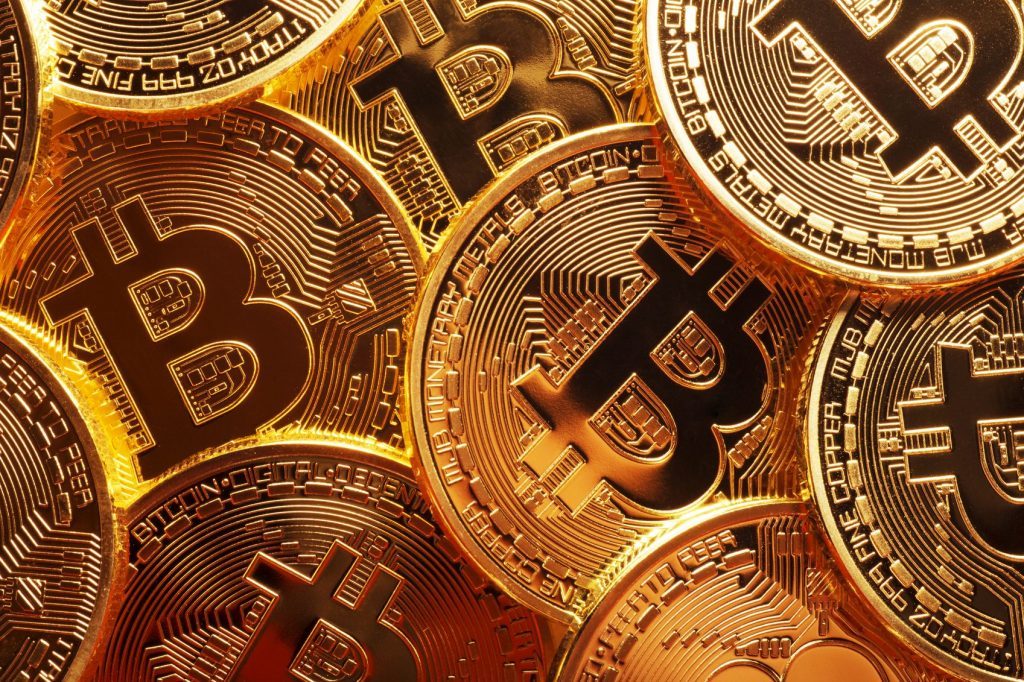
Bitcoin is poised to grow in 2017.
The Trump-promised fiscal spending binge is expected to add to the approximate $20 trillion of U.S. national debt, tripling the current U.S. budget deficit from about $600 billion to $1.2 trillion to $1.8 trillion.
The spending will cause U.S. growth and inflation to skyrocket, forcing the Federal Reserve to accelerate its hikes and the U.S. dollar to soar to new heights.
This creates a domino effect in emerging markets and China in particular, leading people globally to seek alternative currencies and payment systems that are not tied to central banks. Central banks engage in exhausted monetary policies that are in full financial repression mode.
Images from Shutterstock and Ethereum.

Chris Corey
CMO Markethive Inc
Lester Coleman on 31/12/2016
Alan Zibluk Markethive Founding Member





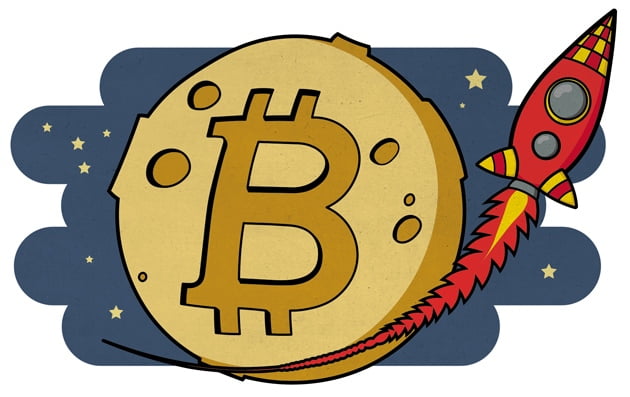



 New Year New Opportunities and Resolutions
New Year New Opportunities and Resolutions







